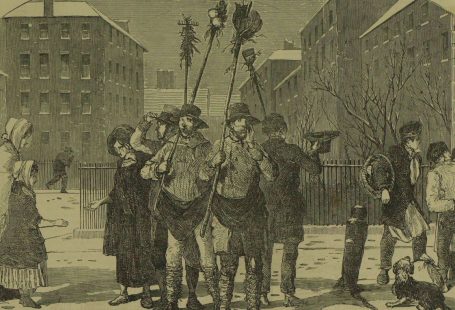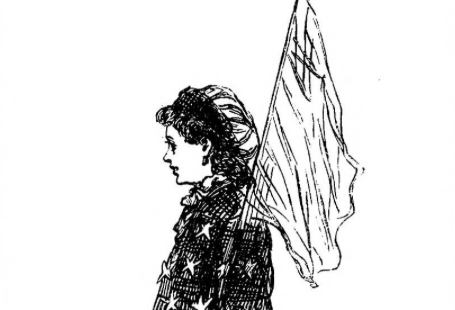This week at The Archive we are delighted to welcome one very special new addition, as well as the 97,542 brand new pages which have joined our collection over the past seven days.
Register now and explore the Archive
Our latest new title takes the shape of the Gentlewoman, a richly illustrated weekly newspaper for women. First published on 12 July 1890, the Gentlewoman was ‘presented‘ to her public. In introducing herself to the publishing scene, ‘she already makes bold to say [that] The Gentlewoman has many staunch friends at Court, able and willing to help her in the career she has mapped out for herself.’
Gentlewoman | 13 September 1890
With a name like Gentlewoman, it is not surprising that this newspaper expressed ‘exactly in its title the class for whom the new journal is established,’ aiming to ‘represent and reflect’ its female audience ‘in all phases of their social and domestic life.’ Furthermore, the first edition promised to ‘appeal to the cultured and the critical, and proposes to advise as well as to amuse.’
‘Royal, Loyal and Constitutional,’ the Gentlewoman promised to know ‘no party politics,’ being written ‘mainly by gentlewomen for gentlewomen.’ Already, the editor had secured ‘the ablest professional and amateur writers and artists of established reputation,’ in order to produce ‘a bright, sparkling newspaper de luxe, indispensable to every Gentlewoman.’
And the Gentlewoman was successful in its aims, quickly establishing a reputation for good writing. For example, the consecutive novel The Fate of Fenella appeared from December 1891, with the likes of Bram Stoker, Florence Marryat and Arthur Conan Doyle all contributing to the story.
In 1892 Raffles novelist E.W. Hornung was appointed as editor, and the newspaper continued to flourish with its literary ties, Margaret Wolfe Hungerford’s novel A Point of Conscience appearing in 1895.
Upon its first publication the Gentlewoman had already laid out that ‘Advertisements are indispensable, because every copy issued costs.’ But for anybody with an interest in fashion history, the Gentlewoman is a goldmine of various clothing, lifestyle and beauty advertisements, filling the pages of the publication as a veritable visual treat.
Gentlewoman | 13 September 1890
Furthermore, its devotion to all things pictorial was evidenced in its 1898 amateur photography competition, the winner of which was rewarded with 200 guineas (nearly £16,500 today).
Of course, its ties to Court and the gentlewomen of it were strong too. The Gentlewoman honoured Queen Victoria’s Diamond Jubilee with the publication of ‘The Gentlewoman’s Record of the Reign of Victoria the Good.’ Some twenty years later, it was also the first newspaper to announce that Princess Mary (only daughter of King George V) would train as a nurse at Great Ormond Street.
The reign of the Gentlewoman would finally come to an end in 1926, when it was merged with magazine Eve: The Lady’s Pictorial, the publication eventually becoming known as Britannia and Eve.
As well as the addition of the Gentlewoman, we have also updated three of our existing titles this week. You will find updates to the Cork Daily Herald, which was first published in 1857 as the Cork Herald and Southern Counties’ Advertiser. We have also added the year 1845 to Lancashire’s Fleetwood Chronicle, as well as the years 1941 through to 1952 to the Boston Guardian, which was founded in 1854 and over a century later was merged with the Lincolnshire Standard.
The Sin and Scandal of Tight-Lacing
In 1893 the Gentlewoman launched a crusade against the tight-lacing of corsets, in what it labelled the ‘Sin and Scandal of Tight-Lacing – A Crusade Against this Modern Madness.’ In a series of articles running from 1893 to 1894, the Gentlewoman took a stand at the prevailing fashions of the time, citing medical testimony as it did so.
Under the recurring title of the ‘Sin and Scandal of Tight-Lacing,’ the editor of the Gentlewoman reveals how he has received ‘letters from medical men prominent in the profession and from all parts of the country,’ and he hopes the urging of these professionals will stop the practice of tight-lacing.
One such letter from Dr J. St. Clair Boyd, of Ulster Hospital, Belfast, reads:
You have my hearty sympathy in your crusade against this fashion, with its unobserved results of misplaced viscera and warped functions…I hope…that through your journal the leaders of fashion may be brought to realise their responsibilities, and for the sake of generations to come pause in their unnatural mutilations.
Dr Culver James, from Kensingston, also writes:
I cannot imagine a subject more likely to be useful to your fellow countrywomen than that of tight-lacing. The medical profession have in vain raised their voices in season and out of season against this barbarous and inelegant custom, and it is to be hoped that you will be more successful than they have been in gaining the attention of those ladies…and in assisting them in their endeavour to discourage so imprudent a habit. The evils of tight-lacing are innumerable – sometimes so great as to shorten life by many years; at other times adding to the discomforts and pain of daily existence by increasing neuralgia, headaches, indigestion, flatulence, &c.
Meanwhile, Dr G.H. Darwin from Didsbury warns of the pressure exerted on the liver of those wearing tightly-laced corsets, whilst urging ‘Let our girls and young women breath freely, and walk at liberty, with waists of healthy, normal shape.’
Fashions of the day – note the impossible smallness of the waists | Gentlewoman | 3 November 1894
Dr G.D. Mackintosh concurs, writing of his experience giving anatomy lessons in Edinburgh. He had seen the adverse affects of tight-lacing first hand, the liver and stomach being dislodged ‘from their natural positions,’ and breathing power being restricted.
This is just a sample of the litany of evidence, testimony and opinion gathered by the Gentlewoman on the subject of tight-lacing, and although not wholly successful, it marked an important resistance to a fashion that was putting women in danger for the sake of their figures.
The Gentlewoman revisited the ‘controversy‘ in 1907, admitting that it failed ‘to bring forward actual evidence in proof of its harmfulness’ (despite the medical testimonies). Although ‘the tendency of fashion has for the last year or two been emphatically in the direction of a larger waist than the eighteen to twenty inches formerly demanded of women of fashion,’ there were those still who needed to be convinced that ‘the compression of girls’ waists to seventeen inches is fraught with menace to their health.’
Gentlewoman | 24 December 1892
In the end, it was the First World War which brought about an end to the trend of tight-lacing, as women were needed in the workplace and such corsets would have made their jobs impossible. Fast-forward to the 1920s, when corsets had all but been abandoned in fashion, with the freedom of shorter dresses and Flapper culture.
New
Title |
Years Added |
| Gentlewoman | 1890-1895, 1897-1915 |
Updated Titles
This week we have updated three of our existing titles.
You can learn more about each of the titles we add to every week by clicking on their names. On each paper’s title page, you can read a FREE sample issue, learn more about our current holdings, and our plans for digitisation.
Title |
Years Added |
| Cork Daily Herald | 1859, 1861-1862, 1869-1871 |
| Fleetwood Chronicle | 1845 |
| Boston Guardian | 1941-1952 |
You can keep up to date with all the latest additions by visiting the recently added page. You can even look ahead to see what we’re going to add tomorrow.














